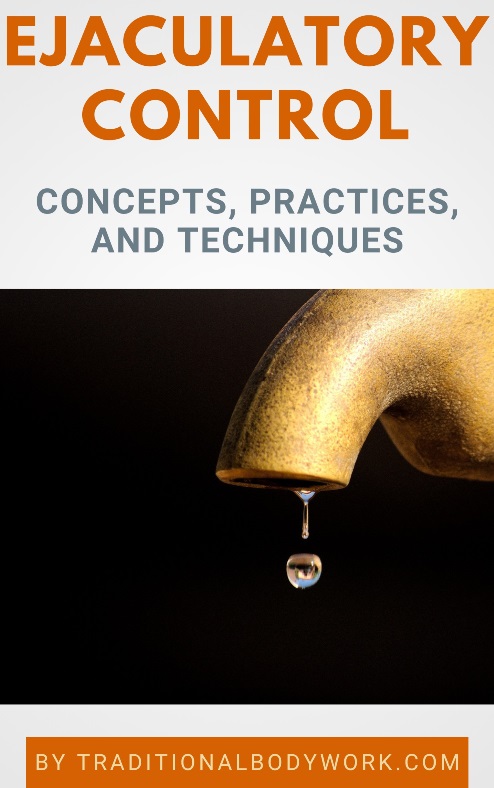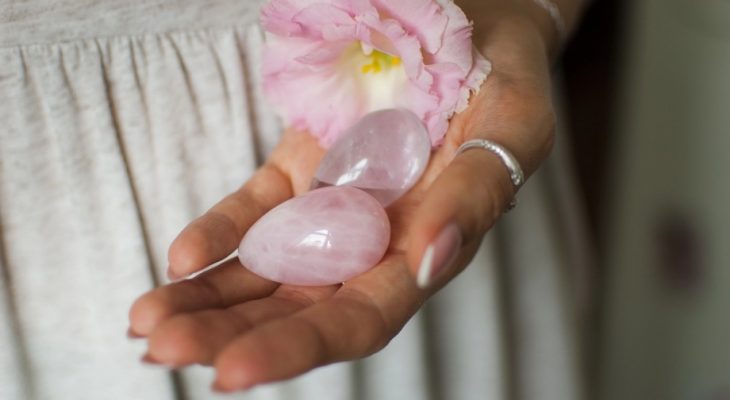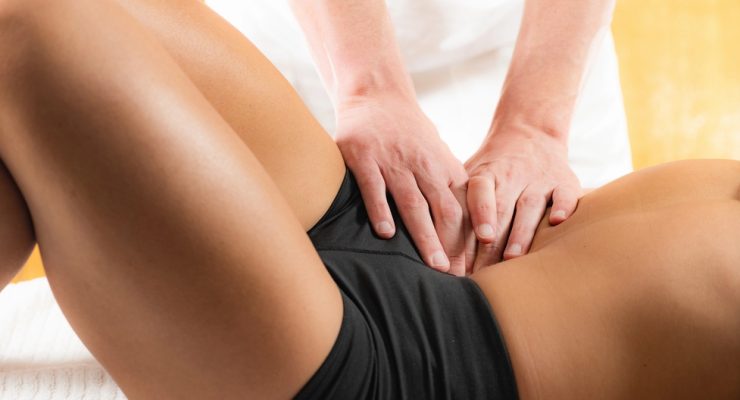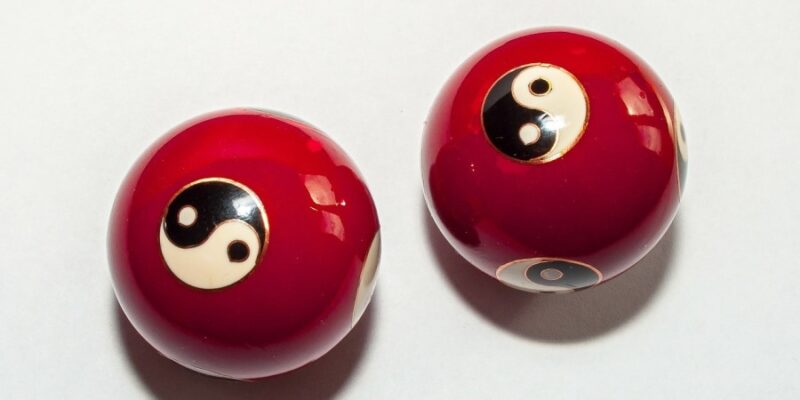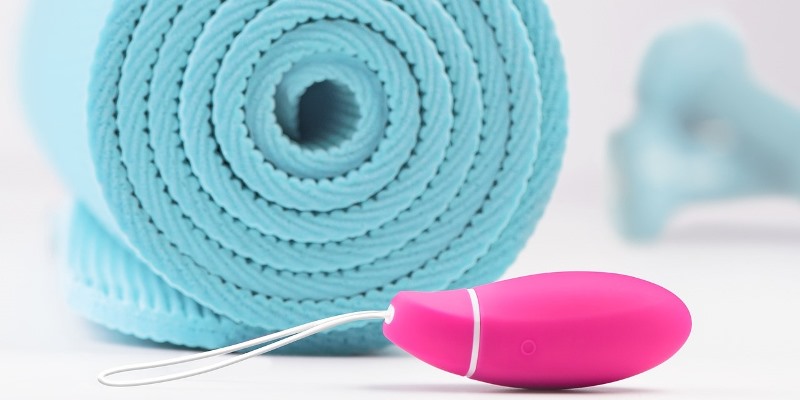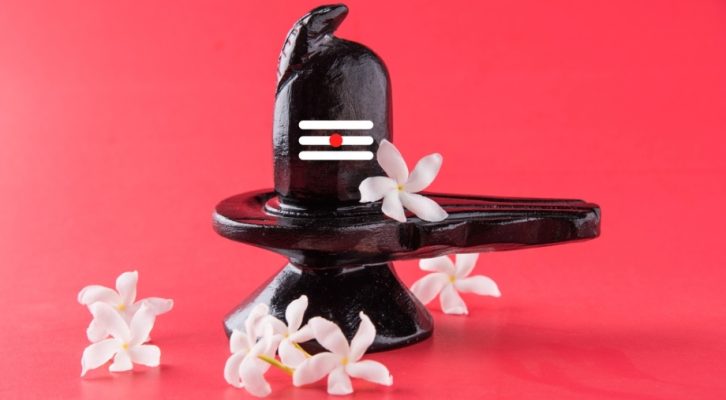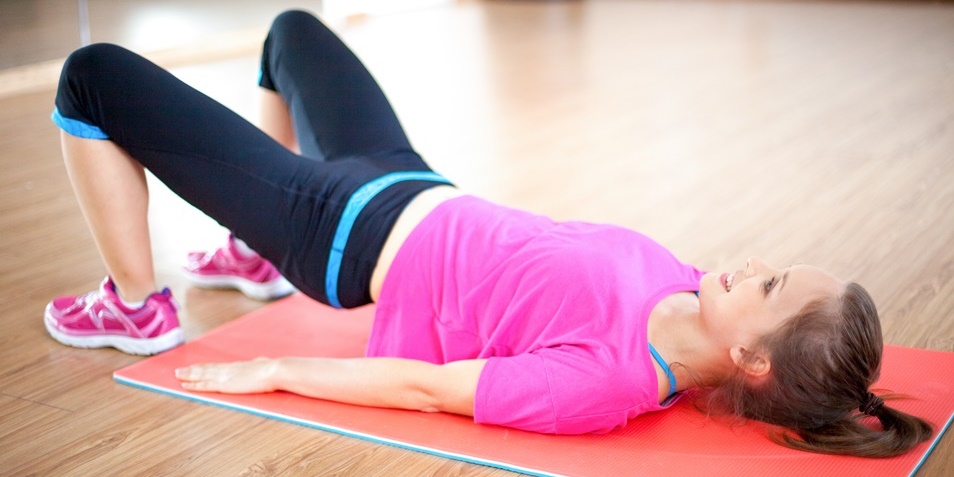
The pelvic floor is composed of muscle fibers and connective tissue which cover the area underneath the pelvis. It separates the pelvic cavity above from the perineal area below. Both men and women have a pelvic floor (also called pelvic diaphragm), but those of women are larger than those of men.
The pelvic floor is important for support of the pelvic organs, that is, the bladder, intestines, the uterus, and for maintenance of continence (the ability to control movements of the bowels and bladder). It also supports childbirth, it helps to keep optimal intra-abdominal pressure in check, and plays a role in erections and ejaculation in men.
Why Exercise the Pelvic Floor?

Pelvic Floor Muscles Exercises strengthen the muscles around the bladder, uterus, vagina, prostate, penis, and lower back. Exercises can furthermore support the rectum and small intestines. Strengthening this area can also help stop urinary or fecal incontinence, treat prolapsed organs, and keep or realign organs in their proper locations and positions. Both men and women can do pelvic floor exercises.
For women, pelvic floor exercises are also beneficial during pregnancy and after childbirth. For men, a strong pelvic floor enhances firmness during erections and helps keep blood from leaving the penis. Regular Kegel Exercises for Men done twice-daily for three months can significantly improve erectile dysfunctions. Other reasons to pay more attention to the pelvic floor muscles are weakening due to surgery, aging, excessive straining caused by, for instance, constipation or chronic coughing, or being overweight.
In the West, Kegel Pelvic Floor Exercises are well-known, but there are also many traditional Asian treatments that support building strength and vitality of the pelvic floor muscles.
But it’s not about strengthening only — an important other goal of Pelvic Floor Exercises is releasing tension of the pelvic floor to enable better blood supply and circulation for (genital) organs in the area. One needs to keep in mind that a tight and over-worked pelvic floor may bring its own health problems, which means that the pelvic floor muscles also need relaxation, for instance by stretching them regularly through an abdominal breathing technique, practicing the Yogic Child’s Pose (called Balasana) and the Yogic Happy Baby Pose (called Ananda Balasana), and by carrying out deep squatting exercises.

In contemporary societies, we often sit still for longer periods and most of us seldom actively use the pelvic floor muscles. This can lead to health issues such as painful menstruation, reproductive problems, loss of sensitivity and sensation, and lower energy levels. In fact, the main cause of these problems is attributed to the fact that there’s a lack of blood flow to this area of the body.
In many Asian traditional medicine systems it’s claimed that Vital Life Force (Prana, Chi, or Qi) can leak through the pelvic floor and get lost if the pelvic floor muscles are weak. Preventing this is considered important because Prana or Qi is indispensable to maintain high levels of energy and gain longevity.
As for Asian practices, think of exercises within Indian Yoga, Qigong, and Thai Reusi Dat Ton (Thai Yoga), or other treatments such as Vaginal Steaming, Yoni Egg or Jade Egg Exercises, Abdominal Binding, and certain Postpartum Massage modalities.
In Short – Health Benefits of Pelvic Floor Exercises
- Strengthens and revitalizes the pelvic floor muscles;
- Lowers risks of urinary or fecal incontinence;
- Stops urinary or fecal incontinence;
- Reduces Erectile Dysfunction (ED) symptoms;
- Increases sensitivity during sexual intercourse;
- Promotes more intense orgasms for women and men;
- Realigns genital organs in their proper position;
- Maintains higher levels of energy and supports longevity;
- Supports childbirth;
- Promotes better blood supply to the genital and abdominal organs;
- Improves prostate health;
- Alleviates general pelvic pains;
- Aids postural corrections.




